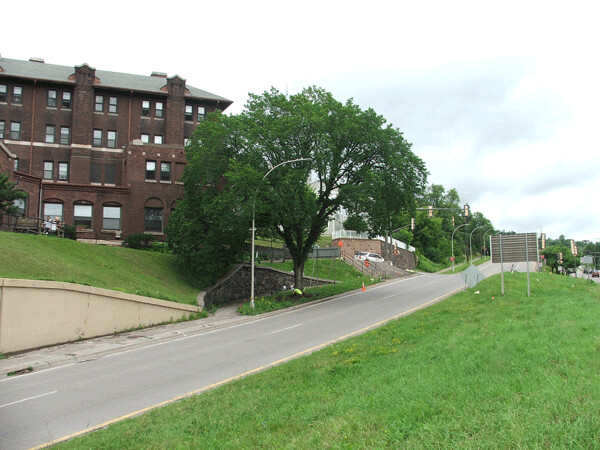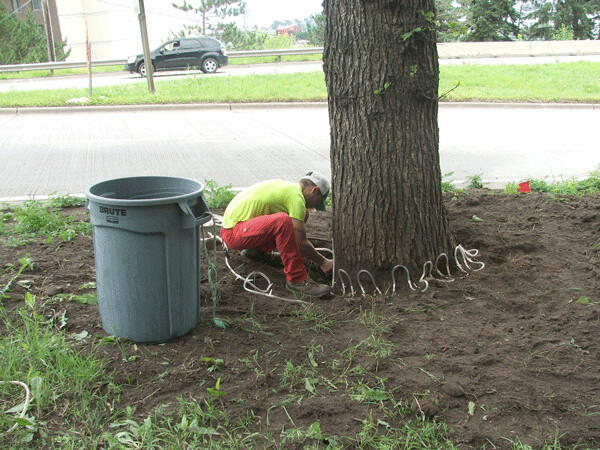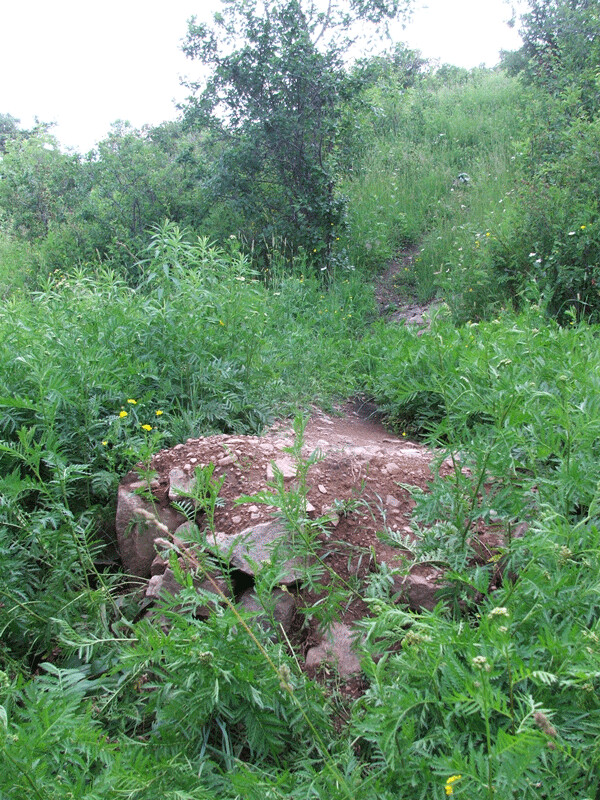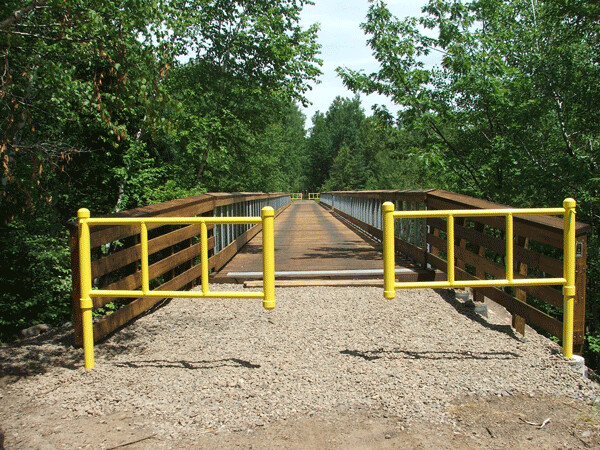News & Articles
Browse all content by date.

The American elm is ideal for streetscapes—it’s tall and shady, long-lived, and tolerant to different types of environmental stress. The only problem is that it can’t survive Dutch elm disease (DED). Between the 1920s and the 1980s, the invasive Dutch elm fungus, spread by bark beetles, wiped out tens of millions of elm trees, the wave of death spreading inexorably west and south across the country from its entry point in New York City. Duluth hired its first forester in 1971, specifically to deal with the approaching disaster. The city had 8,000 elm trees on its boulevards.
Like everybody else, Duluth fought the battle hard, and lost. Today, 98 percent of the city’s elm trees are gone. But the disease didn’t kill them all. A few mature elms, whether due to natural resistance or mathematical probability (as surviving trees get fewer and farther between, there is less chance of an infected bark beetle finding one), survive on the city’s streets today.
Before this year, the only elms the city protected were at the Civic Center. In 1984, 20 elms at the Civic Center were treated with the DED fungicide Arbotect. This treatment is effective if repeated every three years. As I reported in April of 2017, the city’s fungicide treatment of the Civic Center elms has been spotty at best—I identified one instance where five years elapsed between treatments. In 2016, four of the Civic Center elms were identified with DED and had to be cut down. Today, only 5 of the original 20 trees remain—the last 5 mature elms the Civic Center is likely to see.

The city recently contracted with Levy Tree Care to treat the remaining Civic Center elms, as well as 12 other elms elsewhere in the city, with Arbotect. Four of the treated trees are located on the East Hillside, three are in Gary, two in the West End, and one each was treated in Morgan Park, Observation Hill, and West Duluth. The cost to the city to treat the 17 trees was $6,599, or an average of $388 per tree. Bigger trees cost more. The most expensive tree to treat was a $463 beast in Morgan Park; the cheapest was a $265 toothpick in Gary.
In addition to their work for the city, Levy Tree Care voluntarily donated the labor and materials to treat another high-value downtown elm tree with Arbotect. This tree is located near the base of Mesaba Avenue, in front of Duluth Bethel’s work-release facility. If anything demonstrates the suitability of elms for the city, this tree does. Occupying a thin strip of dirt between Mesaba Avenue and the sidewalk, exposed to road salt and oil and every other chemical running down the hill, buried with crud by plows, bathed constantly with exhaust fumes, the elm tree nevertheless spreads a full and luxuriant canopy, as if life couldn’t be better.
The tree is located within Minnesota Department of Transportation right-of-way. On July 12, 2018, Levy Tree Care conducted their treatment of the elm. They were assisted by two MNDOT employees with an air compressor, whose services MNDOT donated to the project. “It’s been a great collaboration with MNDOT to do this,” said Levy Tree Care owner Louise Levy.
Using an “air spade,” essentially a pistol grip attached to a long nozzle, Levy employee Biagio Nigrelli blasted dirt out from around the tree, covering himself thoroughly in the process. When the top of the root flare was exposed, Nigrelli drilled small holes around the base of the tree—29 holes in all, a few inches apart. He and another employee then tapped plastic tees lightly into the holes with mallets. They attached the tees to clear plastic tubing, which ran through a pump apparatus to a plastic trash bucket filled with the fungicide—62 ounces of Arbotect mixed with 31 gallons of water. When the setup was complete, Nigrelli switched it on and the Arbotect cocktail began gurgling through the tubing.
“And now we wait,” said Nigrelli.
“It’s just slurping it up now?” I asked.
“Yes. We’re just providing enough pressure to match with the tree, and kind of forcing it a little bit … The tree’s getting a direct injection of water, which it likes, so it’s going to immediately suck that up. And then after it’s gotten about 15-plus gallons, I think it’s a little bit like, ‘All right. I’ve had my drink. I don’t need too much.’ … The last 15 gallons takes the most amount of time.”
Nigrelli estimated that it would take the tree “probably about an hour” to drink the full dose.

Renegade mountain bike trail
It’s like we blinked and there they were: mountain bike trails. Ten years ago, there were none. Today, when one looks at a map of the city, not a park or recreation area remains that is not heavily filled with the distinctive intestinal squiggle of mountain bike trails. The goal of the volunteer group Cyclists of Gitchee Gumee Shore (COGGS), which has built many of the trails, is 105 total miles of mountain bike trails in the city. With help from the city and the state, COGGS has almost reached that goal.
“We’ve built a majority of the trail system now and we’re just finding these remaining gaps,” former COGGS President Waylon Munch told the Duluth News Tribune recently. “At this point, it’s really just playing connect-the-dots.”
It’s a remarkable achievement. In a decade, a single user group has put its mark on virtually every available square foot of green space in the city. Nobody else can say that.
As the mountain bike trail system has proliferated, another city resource has disappeared: trail-less green space. There used to be plenty of wild areas in the city with no trails. Suddenly, in a mere decade, most such places have disappeared. They have been systematically hunted down and eliminated by the mountain bike pioneers.
Sadly, 105 miles of official trail is not enough for some people. In the area of Duluth that some maps call Central Park, I recently came across a renegade mountain bike trail, complete with custom features, that somebody had decided to build on their own.
Central Park is the steep, rocky area of the hillside below Enger Tower that you see when you’re coming into town on the Blatnik Bridge. There’s one giant powerline marching down the hillside in that location, and not much else. It’s the only place in Duluth where the escarpment is unforested, a landscape of tough grasses, shrubs, and bedrock formations rather than trees. Sitting on a black gabbro slab in Central Park, overlooking I-35 and the port, one can feel strangely remote from the city.
Of course, where there is green space, there are mountain bikers. Last year, as I was passing by on Third Street, the lower boundary of Central Park, I noticed a guy on the hillside with a weed trimmer, which I thought was a strange place for him to be. Another time, a mountain biker appeared out of nowhere and whipped across the road in front of me. As time went on, in casual conversation, I heard occasional mention of a mountain bike route in Central Park that was sort of an open secret in the biking community. This summer, I visited the area and found a grubbed trail, a filled-in wet area, one small jump and one good-sized jump built out of rock and clay—all illegal.
To get the raw material for their project, the builders had dug into the hillside, excavating a notch four feet high and seven or eight feet long. They had left behind a black rubber entry mat, for some reason, and some litter: three or four beer bottles, an empty peanut tin, an empty can of mushroom soup. This was no slap-dash affair: Building up the wet area and the big jump would have taken a couple of people with shovels several hours, at least.
It felt like a violation to me. I didn’t see equestrians or disc golfers going out and digging up public property without permission, but mountain bikers, who already have more trails in the city than anyone else, apparently have an unstoppable desire to make more. Some mountain bikers.
So I’m pointing it out, with some trepidation. The city does not approve of illegal trail-building, but they love mountain bike trails in general. I only hope this tale of velocipedal vandalism doesn’t turn the city’s thoughts toward building a formal mountain bike trail in that location.
Seppala sentencing
Over the past couple of years, I have written several stories about Ironbound Studios in Chisholm, the movie studio that was founded by Jerry Seppala, who was later convicted of fraud in federal court. One chapter of that story has now ended. On July 17, 2018, Seppala appeared before Judge Kimba Wood in New York for sentencing.
In his written remarks, Seppala expressed remorse for his crime. He said that he had lost focus on God and allowed his desire for worldly goods to lead him astray and get involved with the wrong kinds of people, and now he was paying the price. “I am sorry for my actions and choices … I have been able only to rely on God’s grace to start to correct the direction that my life was drifting toward … ‘Success’ as the world celebrates it [is not] my intended destination anymore.”
Eighteen people—family, friends, and members of Seppala’s church—wrote letters to the judge urging leniency for Seppala. Convicted of a misdemeanor, he faced a maximum of one year in jail. The petitioners asked the judge to not incarcerate Seppala, because he was a good, generous person who had learned from his mistakes.
After weighing the circumstances, Judge Wood sentenced Seppala to four months’ incarceration and one year of supervised release. At the defense’s request, the judge further ordered that Seppala should be allowed to complete his sentence on the weekends, so as not to jeopardize his employment—sort of an EZ-payment plan for prison sentences.
Seppala will also be required to pay $987,500 in restitution to five victims of his fraud.

Stewart Creek trestle
Initial restoration work on the old Duluth Winnipeg and Pacific rail line was completed this spring by city contractors. The city hopes to eventually transform the century-old rail corridor into a major east-west trail for multiple uses. Major washouts have been filled and stabilized. Stone rubble has been cleared from the railroad tunnel under Ely’s Peak. Crumbling culverts have been repaired. The trail surface has been graded, and rockfalls removed.
Where the DWP crosses Stewart Creek, the old trestle is now rehabilitated. Decked with new lumber, fenced with new cable, and announced at either end by bright yellow gates, what was recently a hazardous skyway of rotting ties and yawning holes has become a broad and inviting avenue. The refurbished trestle’s extreme newness is a little disconcerting out in the woods. You see it and you start looking around, like, “Whoa! What’s going on around HERE?”
| Tweet |

